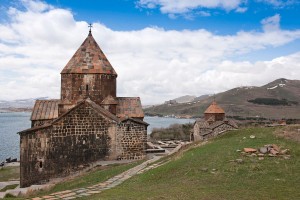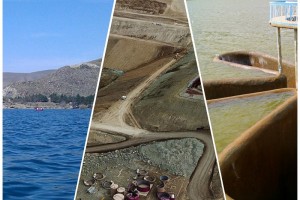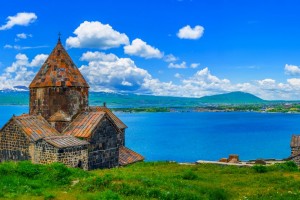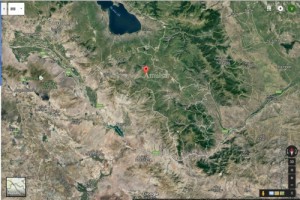Sevan barbel: Red Data Book of Armenia

Carps — Cyprinidae
Status. A vulnerable endemic species of limited distribution and decreasing population. Listed in the Red Data Book of the former USSR. According to IUCN criteria categorized as Vulnerable VU A2cd.
Distribution in Armenia. Distributed in the Lake Sevan and some tributaries. Does not occur beyond the Sevan basin. Represented by lacustrine, fluvio–lacustrine and fluvial forms.
Habitats. Inhabits the shallow areas down to the depth 10 m. In winter it moves to depressions 30 m deep. In some tributaries forms the fluvial biotypes.
Biological traits. Maturity is reached at 3–6 years, in females by 1–2 years later than in males. Fertility is 3–20 thousand eggs. Spawning occurs in June–August. The fluvial form of smaller size and lower fecundity has survived only in the middle course of the Argichi River. Feeds on organisms living near the bottom.
Population size and its trends. Previously, the barbel was an abundant species of commercial importance. Its annual harvest rates did not exceed 20–25 tonnes. Nowadays, its population size and habitats are significantly reduced.
Major threats. The main threats are dryout of key habitats and spawning grounds, subsidence of water level, water pollution in fluvial spawning grounds, water use from tributaries for irrigation and poaching throughout the lake, rivers and habitats of the fluvial form.
Conservation measures. Artificial breeding was not applied and its methods are not developed. Catch in the Lake Sevan is prohibited since 1981. Protected in Sevan National Park. It is essential to set up control over natural recovery, develop methods of artificial breeding and to enforce stringent conservation measures across the species habitats.
Suggestions
 The Ministry of Environment sent a letter international partners to draw their attention to the real danger of environmental disasters as a result of Azerbaijan's large-scale aggression towards the territory of Armenia
The Ministry of Environment sent a letter international partners to draw their attention to the real danger of environmental disasters as a result of Azerbaijan's large-scale aggression towards the territory of Armenia
 Hydrological regime of Lake Sevan on August 22-28 (2022)
Hydrological regime of Lake Sevan on August 22-28 (2022)
 “Lydian Armenia” CJSC has used the water of Lake Sevan for technical purposes. Artur Grigoryan
“Lydian Armenia” CJSC has used the water of Lake Sevan for technical purposes. Artur Grigoryan
 Lake Sevan, Armenia. most incredible — and affordable — undiscovered holiday destinations in Europe
Lake Sevan, Armenia. most incredible — and affordable — undiscovered holiday destinations in Europe
 Sevan and Jermuk as Amulsar Gold Project Price
Sevan and Jermuk as Amulsar Gold Project Price












